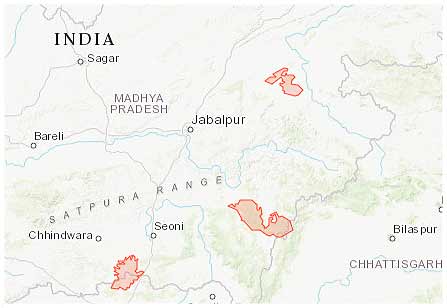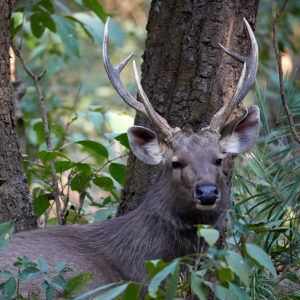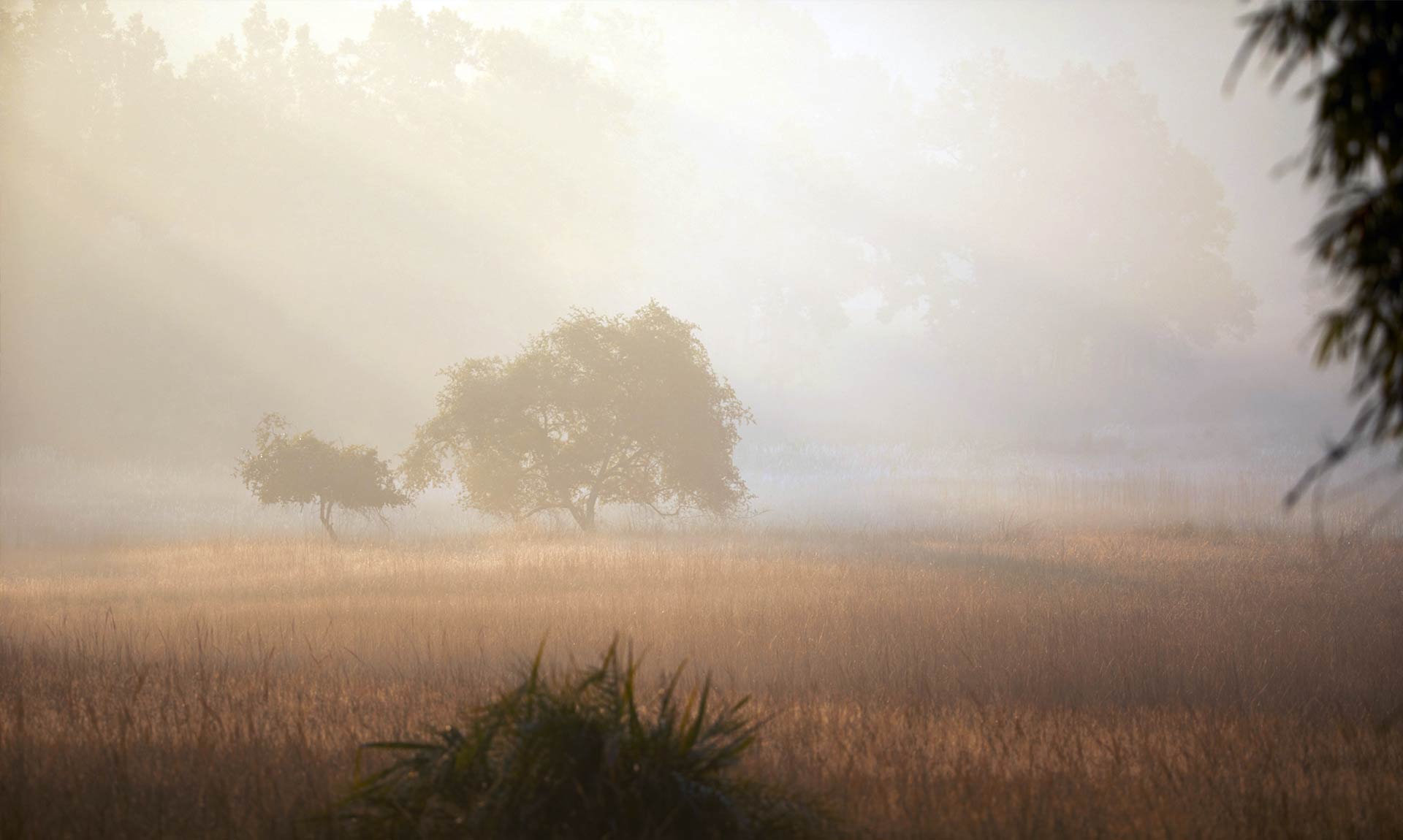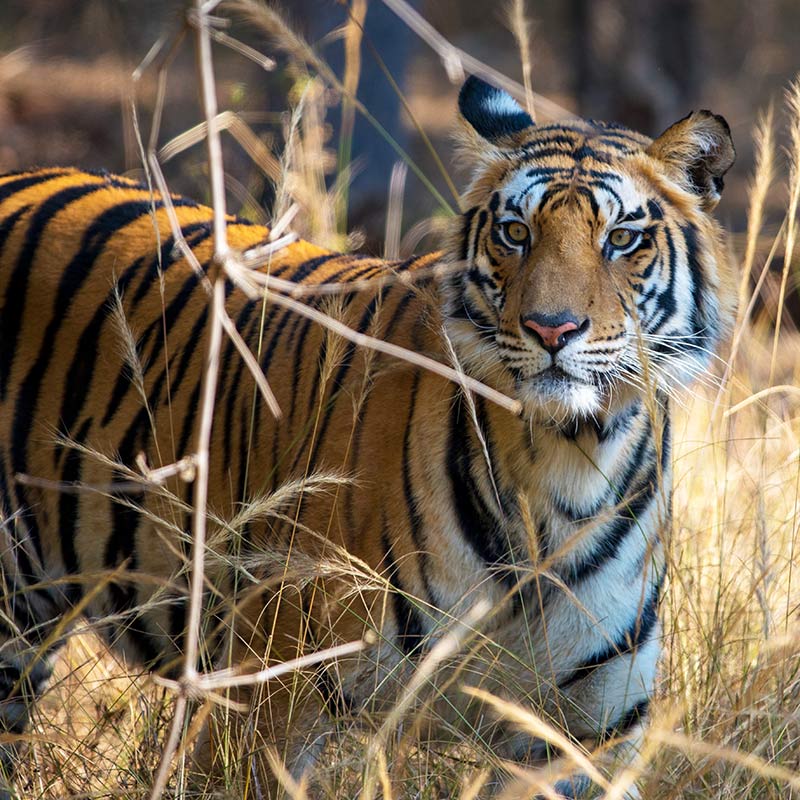SQUARE MILES

LOCATED IN THE HEART OF INDIA, THE RESERVE OCCUPIES APPROXIMATELY THE SAME AREA AS RHODE ISLAND
STRONGHOLDS FOR: OVER 7% OF THE WORLD’S ENDANGERED TIGER POPULATION. OTHER SPECIES INCLUDE THE LEOPARD, WILD DOG, JACKAL, FOX, MONGOOSE, PORCUPINE AND HONEY BADGER
THERE ARE THREE MAIN PROTECTED WILDLIFE AREAS IN MADHYA PRADESH INCLUDING BANDHAVGARH NATIONAL PARK, PENCH TIGER RESERVE AND KANHA TIGER RESERVE
MADHYA PRADESH FACTS

Bandhavgarh National Park
Bandhavgarh National Park (about 380,000 acres) is located in the Umaria district of Madhya Pradesh. It was declared a national park in 1968. The park has a large biodiversity, consisting of approximately 350 species of birds, 80 species of butterflies and 37 species of mammals. Bandhavgarh National Park is most famous for its population of Tigers, who occupy the top of its food chain. In 2001, the central area of the park (inside the buffer) had an estimated Tiger population of 22. Of these, were two well-known individuals named ‘Charger’ and ‘Sita’. As of 2016, Bandhavgarh National Park had an estimated Tiger population of 60 Tigers and 35 Cubs. Almost all of these are descended from Charger and Sita.
Pench Tiger Reserve
The majority of the Pench Tiger Reserve (about 300,000 acres) is located in Madhya Pradesh. Another portion is on the other side of the border with Maharashtra (about 183,000 acres). Pench Tiger Reserve has one of the highest densities of herbivores in India. The Tiger resides at the apex of its food chain. In 2002, the population of Tigers in Pench Tiger Reserve was 50 individuals. As of 2015, Tiger population was estimated at 38. In 2017, 44 adult Tiger were counted in Pench, along with an estimated 7 or 8 cubs.
Other carnivores are Leopard, Wild Dog (Dhole) and Wolf. Other species of mammal include the Jackal, Fox, Civet, Mongoose, Porcupine and Ratel (Honey Badger). 325 species of birds, 205 species of butterflies and moths, 100 fish, reptile and amphibious species, and numerous insect species call Pench home. The Panther, once maintaining a similar population to the Tiger, has not been observed in Pench Tiger Reserve since 2005.
Kanha National Park
Kanha National Park, was created in 1955 and became Kanha Tiger Reserve in 1973. The park’s mammal species include Tigers, Leopards, Wild Dogs (Dholes), Wild Cats, Swamp Deers, Spotted Deers, Sambars, Barking Deers, the Four-horned Antelope, Foxes and Jackals. Kanha National Park has an estimated 300 species of birds and numerous species of reptiles and amphibians. Kanha is the last refuge of the rare Hard-ground Barasingha, or Southern Swamp Deer, of which only 750 remain. An estimated 83 Tigers and 42 cubs populated Kanha National Park as of 2016.
MADHYA PRADESH UNIQUE FEATURES

Tiger Population
Between the turn of the last century, and up until recently, world Tiger population had steadily declined. As recently as 30 years ago, there were approximately 100,000 Tigers in the wild. In 2008, there were as few as 1,400. Today, due to conservation efforts by India, Russia and Nepal, there are between 2,800 and 3,800 Tigers remaining. There are 50 Tiger reserves in India, containing approximately 2,200 Tigers. This represents about 70 percent of the world’s remaining population. Of these, over 12 percent of India’s Tiger and cub population can be found in Bandhavgarh National Park, Pench Tiger Reserve and Kanha National Park.
MADHYA PRADESH THREATS

There has been modest increase in Tiger population since 2008. However, Tiger habitats in India still face the same dominant conservation threat – poaching. Documented incidents report that gangs of poachers are relentless in their pursuit of Tiger body parts to sell on the black market. One incident, in 2013, caused global outcry when 11 Tigers were poached in the heart of India, by a notorious gang from Baheliya. In 2016, a female Tiger, and her cubs were poisoned in the middle of Pench Tiger Reserve. Forestry laborers and local fisherman, also cannot resist the financial reward of illegally poaching Tiger bones and claws. They enter the parks at night to hunt Tigers and other species, such as the Scaly Anteater – the worlds most trafficked mammal.
Mining activities and infrastructure development in and around protected areas are also putting native species at risk. As human development progresses, habitats become fragmented causing native animals to become isolated from each other. As a result, species do not have the opportunity to mate and their populations decline.












